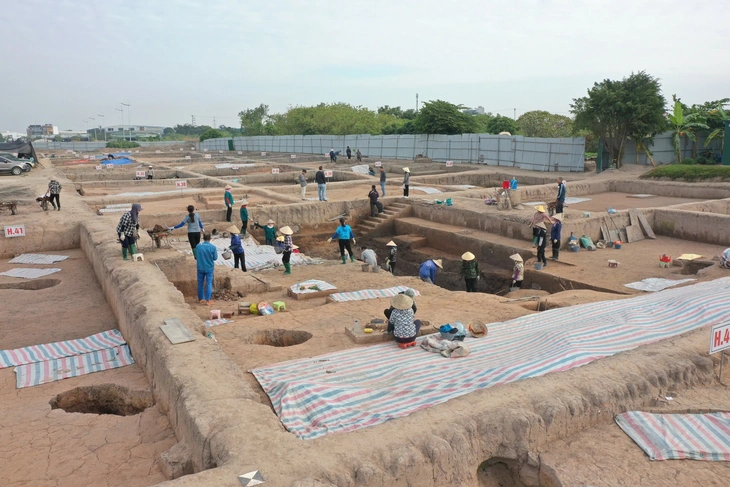
Archaeological excavation at Vuon Chuoi discovered an ancient village nearly 4,000 years old - Photo: Hanoi Museum
The awarding ceremony of the ranking certificate of Vuon Chuoi Archaeological Site and the opening of the thematic exhibition Archaeological Discoveries from Vuon Chuoi took place at the Hanoi Museum on the afternoon of November 9.
Symbol of power of the leader in the Pre-Dong Son period discovered for the first time
According to Hanoi Museum, the Banana Garden relic is a typical archaeological site of the Bronze Age in Hanoi and Northern Vietnam.
Research results have proven the presence of an ancient village that developed continuously nearly 4,000 years ago, through many stages from Phung Nguyen - Dong Dau - Go Mun culture to Dong Son and Hau Dong Son culture on Thang Long - Hanoi land.
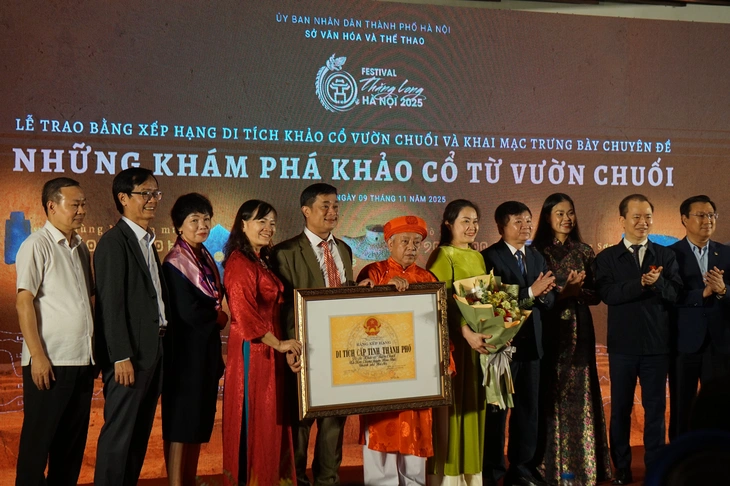
Representatives of Lai Xa village, Hoai Duc commune received the City-level Monument certificate for the Vuon Chuoi relic - Photo: T.DIEU
Since its discovery in 1969, the Hanoi Department of Culture and Sports has coordinated with specialized agencies to conduct 11 excavations with a total area of 7,555m2 .
In particular, the excavation of the western area from March 2024 to March 2025 on an area of 6,000m2 has basically revealed the distribution space, important traces related to the residential area, traces of daily activities, workshops for making stone and wooden objects, burial places for the dead and many typical relics of the Pre-Dong Son - Dong Son cultural period.
Initially recording a huge volume of artifacts from the 2024 excavation, scientists have identified a number of extremely rare specimens recorded for the first time in the history of research on the Bronze Age in Northern Vietnam and Hanoi.
It is a green jade axe, symbolizing the power of a chief, a burial object in a tomb from the Pre-Dong Son period, about 3,500 years ago.
There are also phoenix-shaped accessories and jade collections including accessories (rings, earrings, beads, etc.) and objects symbolizing the power of the ruling class.
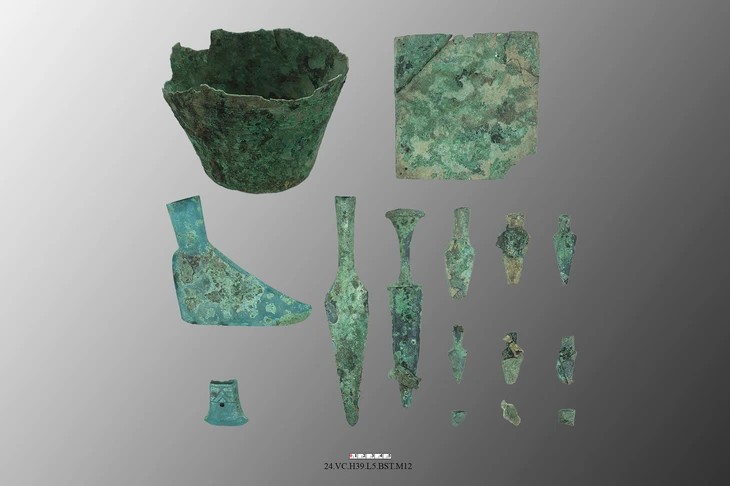
Funeral objects of the leader's tomb - Photo: Hanoi Museum
Archaeological discoveries from the Banana Garden
In order to summarize and evaluate the research results on this relic and introduce them to the public, Hanoi Museum organizes a thematic exhibition. "Archaeological discoveries from the Banana Garden" , an activity within the framework of the Thang Long - Hanoi Festival 2025.
The exhibition introduces nearly 1,000 documents, artifacts, materials, images and graphic maps simulating various types of artifacts and daily life of residents of the ancient village of Vuon Chuoi.
Hanoi Museum tries to reach out to a wide audience by using 3D projection technology, 3D mapping; showing short films recreating the daily life of Pre-Dong Son and Dong Son residents to help viewers visualize easily, while creating an aesthetic impression for the exhibition space.
The exhibition also made an impression by dedicating a corner to honor the scientists and individuals in Lai Xa village (Hoai Duc, Hanoi) who have contributed to protecting, preserving, researching and calling the community's attention to the Vuon Chuoi archaeological site.
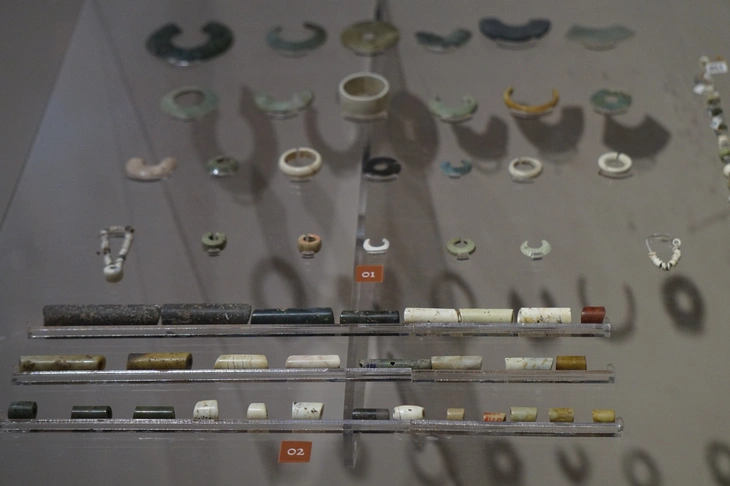
Jewelry of the ancient chieftain class found at the Vuon Chuoi relic - Photo: T.DIEU
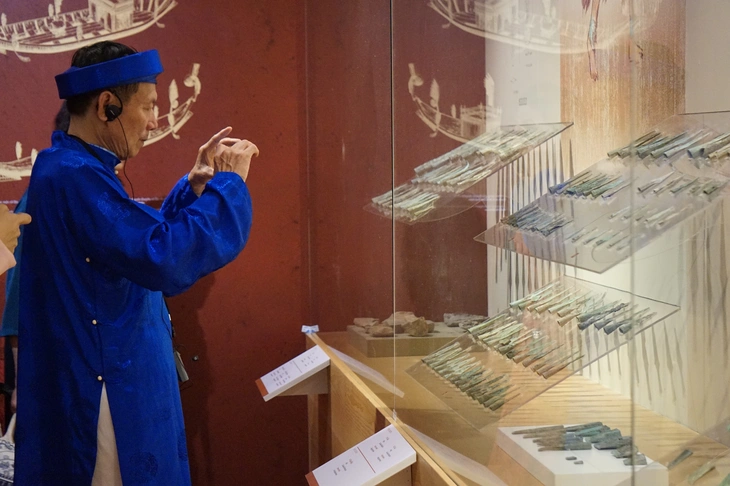
Lai Xa people proudly view the display of archaeological artifacts discovered underground in their village - Photo: T.DIEU
On this occasion, Hanoi Museum also launched the book publication Discovering the Banana Garden (Hanoi) through the excavation season of 2024 - 2025. The book introduces the journey of exploring the relic; new discoveries and perceptions from the results of excavation research in 2024 - 2025...
Back to topic
BIRD OF PARADISE
Source: https://tuoitre.vn/ngoi-lang-4-000-nam-tuoi-duoi-long-dat-o-ha-noi-duoc-xep-hang-di-tich-thanh-pho-20251109202119455.htm


![[Photo] Prime Minister Pham Minh Chinh chairs a meeting on housing policy and the real estate market.](https://vphoto.vietnam.vn/thumb/1200x675/vietnam/resource/IMAGE/2025/11/11/1762838719858_dsc-2107-jpg.webp)





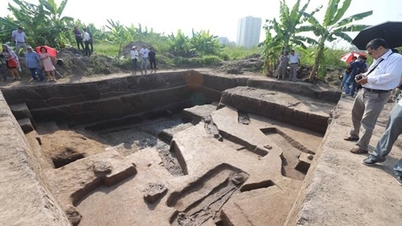



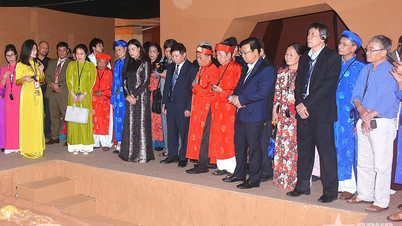



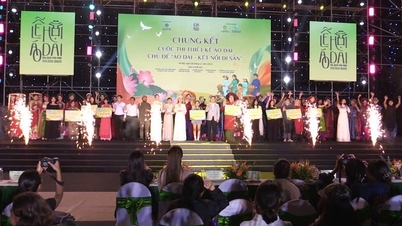
























































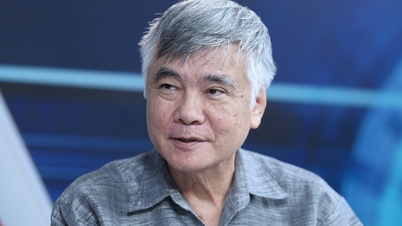




























![Dong Nai OCOP transformation: [Article 4] Reaching national standard products](https://vphoto.vietnam.vn/thumb/402x226/vietnam/resource/IMAGE/2025/11/11/1762825820379_4702-cac-san-pham-trai-cay-chung-nhan-ocop-nongnghiep-174649.jpeg)


![Dong Nai OCOP transition: [Article 3] Linking tourism with OCOP product consumption](https://vphoto.vietnam.vn/thumb/402x226/vietnam/resource/IMAGE/2025/11/10/1762739199309_1324-2740-7_n-162543_981.jpeg)






Comment (0)